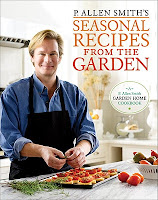I recently wrote about chestnuts for my weekly gardening column in our local newspaper, the Paulding Progress. Chestnuts are a timely topic, what with Christmas and the song, not to mention chestnut season is generally October through December.
The president of the New York chapter of the American Chestnut Foundation, Allen Nichols, somehow saw my column and contacted me, offering to send both American chestnuts for eating and some for planting in the spring. Yes, genuine American chestnuts, not the Chinese ones most people eat these days.
 |
| The natural range of the American chestnut |
Efforts to bring back the American chestnut include the creation of a transgenic American chestnut tree at the State University of New York College of Environmental Science and Forestry (SUNY-ESF). By inserting a naturally-occurring gene from wheat (also found in strawberries, barley, oats and bananas), the chestnut tree is resistant to the fungus. (See video at the end of this blog post.) If researchers are successful in gaining permission, it could be the first transgenic tree to be released in the wild.
My eating chestnuts arrived just before Christmas and yesterday, I set about roasting them. I'd never even seen a chestnut in my life, let alone roasted any, so I consulted Google and found several good guides for the process. I melded several of the guides into one and here's how I did it:
1. Since chestnuts contain a fair amount of moisture, you need to cut a slit in the outer covering to prevent them from exploding as you heat them up in the oven. Make sure your knife is very sharp, because they're very tough, and make a cut about ⅛-inch deep, through the outer layer, the thin papery layer and just nicking the meat a bit.
All you need to do is to provide a vent, but traditional cuts are in the shape of an X:
2. After cutting, I soaked the chestnuts in warm water for about half an hour. This helps loosen the outer covering which will later be peeled away.
3. After soaking, I placed them in baking pan in a 350°F oven for 30 minutes. (Some sources recommend 400°F for 15 minutes.)
4. When they're ready to take out of the oven, the skins will have peeled back on their own and the meats will be a golden color, glistening slightly.
5. When I took them out, I put the hot chestnuts in a piece of foil and closed it up. This allows them to steam a bit, which helps with removal of the skins. After a few minutes, they were cool enough to handle.
6. While many comments were found complaining of the difficulty in shelling the roasted chestnuts, I didn't find it to be difficult at all. Several of them popped right out of the shells on their own. Others came out when I cracked the shells further. The thin papery layer stuck to the shells, so even those weren't a problem. Beginner's luck, maybe?
What did they taste like?
I'm a pretty picky eater. Certain textures, temperatures, and aftertastes have a way of making something unpalatable to me, in addition to the flavor itself. But I often discipline myself to try new things and to eat things that I know are good for me even if I don't particularly like them.
I didn't expect to like roasted chestnuts. The only nuts I really like are pecans and almonds, but I'm even selective about the kind of almonds I'll eat. I like peanut butter (creamy only) but don't like peanuts. Walnuts make my mouth hurt. Cashews are just nasty.
But these chestnuts... YUM! I'm not really sure how to describe the taste to someone who's never had them before, but my first reaction was that their flavor hinted of something I'd eaten before. It took me a bit to identify it, and don't laugh, but to me they tasted like chicken. Not exactly, of course, but that's the taste that came to mind and Romie concurred.
Others have said they remind them of sweet potatoes and I can see that, too. Whatever... they were good. Romie liked them as well, but he'll eat just about anything.
Planting chestnut trees in spring
 |
| Photo from United States Forest Service |
As Allen Nichols told me, "We are encouraging people to plant pure wild type American chestnuts so they have a tree to cross with our blight resistant transgenic tree, when it is available, which we hope will be in just 3-5 years."
I will plant them because I like being a part of something that is for the greater good and because, like my beloved monarchs, they can use all the help we can give them.
Watch this video on YouTube








